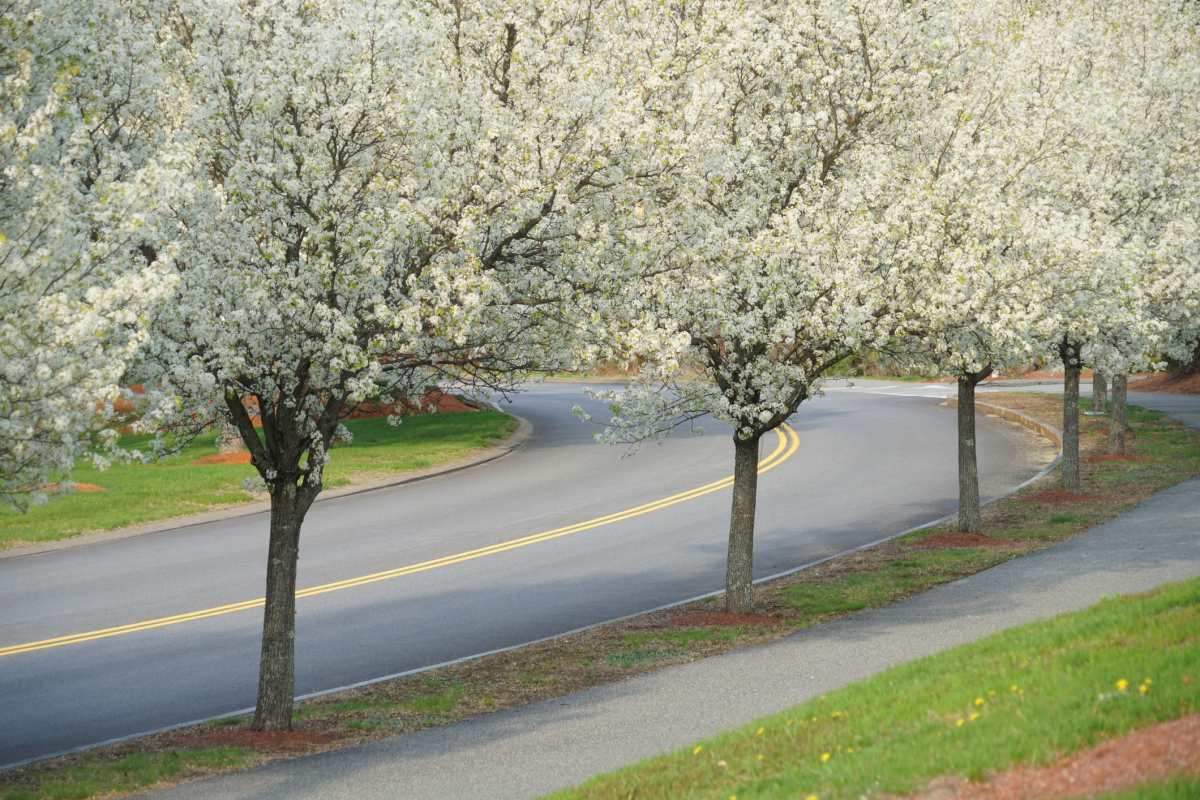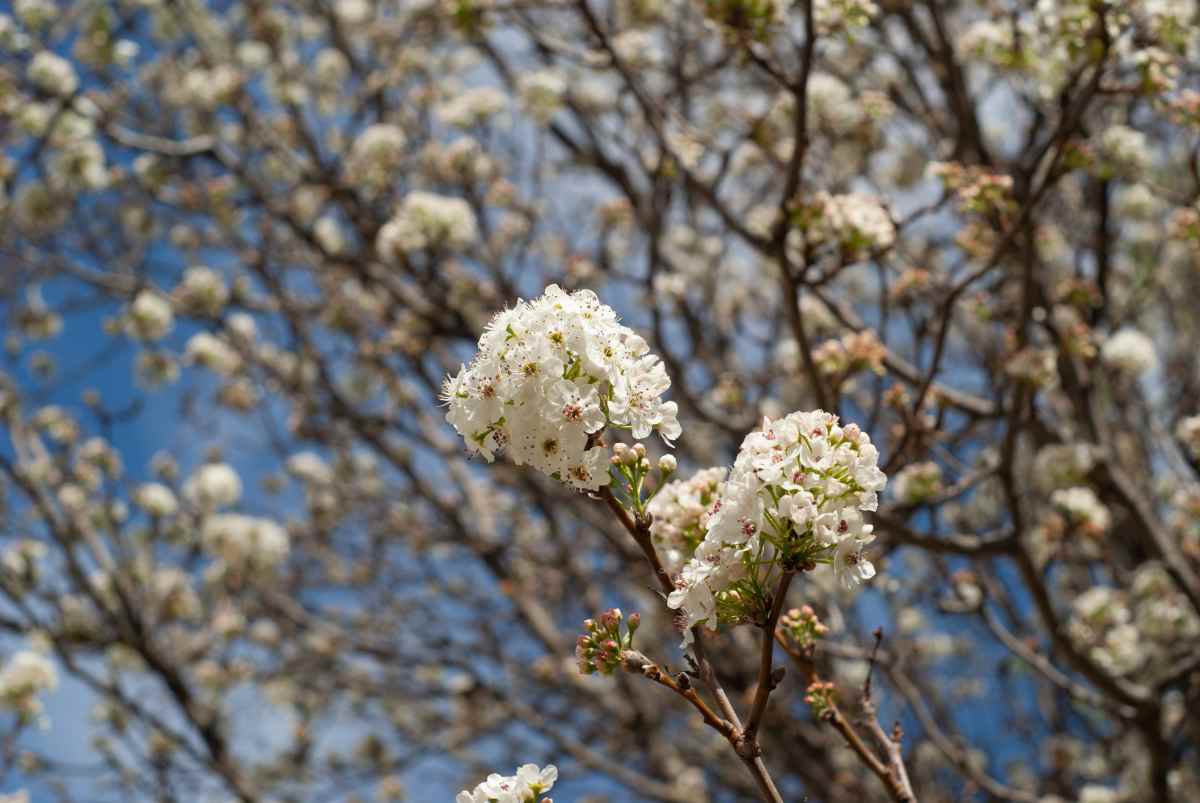Some US States Are Banning Ornamental Pear Trees — It’s Not Just Because They ‘Smell Like Death’

Taking a long walk during springtime is a magical experience - a bounty of velvety green grass under your feet, leaves dripping with crystal dew, and nectar-rich flowers coming alive with parties of birds and thirsty bumblebees. However, if you live in the US, you may not get what you’re expecting. Instead, you may come across a street lined with trees bursting with fluffy white teardrop-shaped flowers, thorny stems, and tiny, hard pears that are softening with the arrival of spring. Beware! Don’t go too close. These ornamental beauties hide a secret you may not find too appealing. Named “Callery pears,” these trees stink, per USA Today.

As unlikely as it may sound, the Callery pears belong to the rose family, but unlike most flowers of this family, their scent will remind you of dead fish, dirty locker rooms, animal carcasses, or even semen, as IFLScience puts it. Someone wrote on Facebook that it “smells like death.” You’ll find these trees flanking the borders of tree-lined streets in Devil’s Strip. Their conspicuous smell is so intolerable that it has prompted multiple government authorities across the US to scream, “No more pears!”
Remove invasive Callery pear trees from your property, snap a picture, and we'll give you a free, native replacement trees at our next Callery pear exchange on Nov. 2 in Blacksburg! Details and registration on our website: https://t.co/HunEjvu0BZ pic.twitter.com/419KDVmsrD
— ForestryVA (@ForestryVA) September 30, 2024
Many have put a ban and these trees are now largely illegal in a major chunk of the US map. Despite looking like the tantalizingly innocent American plum or black cherries, these five-petaled flowers deceive the onlookers by emitting fusty odors that will jolt anyone into a woozy, sickening trauma. “Few trees possess every desired attribute,” The New York Times wrote in 1964, “but the Bradford ornamental pear comes unusually close to the ideal.”

Apart from being miasmas of hellish stench, these pear trees are also notoriously meddlesome and invasive. According to IFLScience, they were first imported to North America from East Asia in 1909 to the Arnold Arboretum of Harvard University, and then again in 1916 by the USDA. The goal was to combat the fire blight disease that was devastating the common pear trees. Contaminated by bacteria, these trees looked as if scorched by fire. Shoots and branches bent into a “shepherd’s crook,” and blackened leaves clung with bacterial ooze, Agriculture Victoria explains.
The Township has removed invasive Callery pear (aka Bradford pear) trees along Edgewood Road in front of the library. New native trees will be planted this Fall as part of the Township's Long Range Master Tree Plan! https://t.co/NEAzu8Aik2 pic.twitter.com/o4RXwbgRkm
— Lower Makefield (@LMTGOV) July 18, 2025
After the Callery pear trees had served the purpose of reviving these trees, they became aggressive and unrestrained. They started invading every street and walkway in the US, like a flaming trail of jungle wildfire spreading rapidly on the grassy mat. In the early 2000s, David Coyle, an assistant professor at Clemson University, was conducting research when he observed that they were aggressively taking over the South, and eventually, the Midwest and North, too.
Callery pear trees, planted as ornamentals across the USA, crowd out native vegetation, threatening grassland and forest habitats. They pose a hazard in urban areas due to weak branches that break easily during storms or heavy snowfall. Learn more: https://t.co/VLrfQVNxIS pic.twitter.com/bfnNwwU48U
— Invasive Species Ctr (@InvSp) August 16, 2024
Car tires were being popped, and the metal tracks were being invaded. Native plants were being choked. In the next few years, they were everywhere. The tree’s putrid smell sends most sweet-loving pollinators revolting away with squishy noses.
One of the most famous invasives in NC is the Bradford pear tree. This tree is a stinky, structurally weak, #invasivespecies that we've created a bounty program incentivizing the removal of said trees with free native trees in return. Learn more: https://t.co/QWTLnJhKoM pic.twitter.com/GQUv9ydU3I
— NC State Extension Forestry (@NCSUExtForestry) February 22, 2023
The Virginia State Forestry Department has added this tree to its list of invasive plants, and so have many other states. The department also conducted a tree exchange session to enable gardeners to exchange their trees for native trees. Ohio was the first state to make it illegal to sell, grow, or plant the Callery pear, per NBC. The step was followed by Pennsylvania, Minnesota, Kansas, and South Carolina.
North Carolina even offered money to people to remove these trees as part of its “Bradford Pear Bounty” program. You better chuck it out, too, because once it establishes its territory, it’s next to impossible to kill it, no matter that you blast it with pesticides or burn it with scorching fires. These hardy, merciless pears offer no escape.
More on Green Matters
The Stinkiest Flower ‘Green Boy’ Is Ready to Bloom in California — And You Can Watch It Live
Conservatory Planted the Smelliest Flower — and Thousands of People Gathered to Watch It Bloom
Gardener Finds Rare Plant With Yellow Flowers Growing Among Weeds — Soon, They Realized Its Value